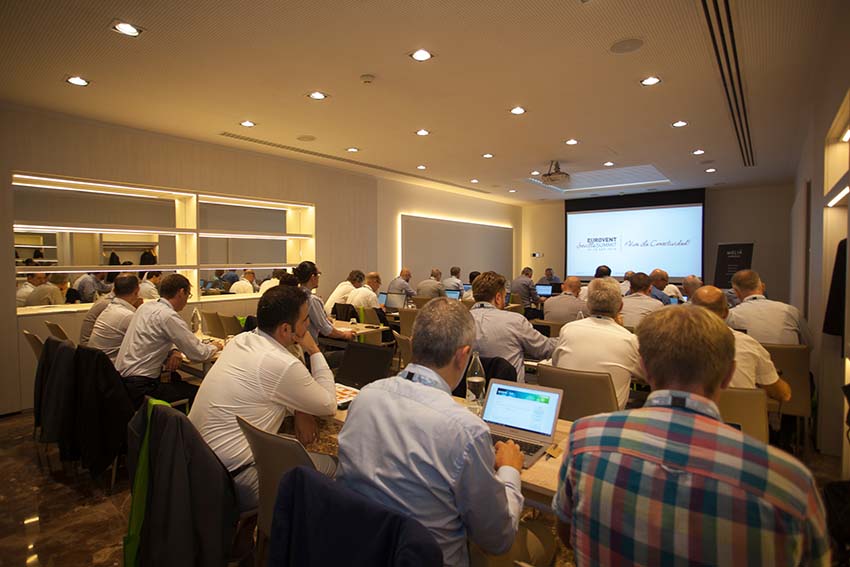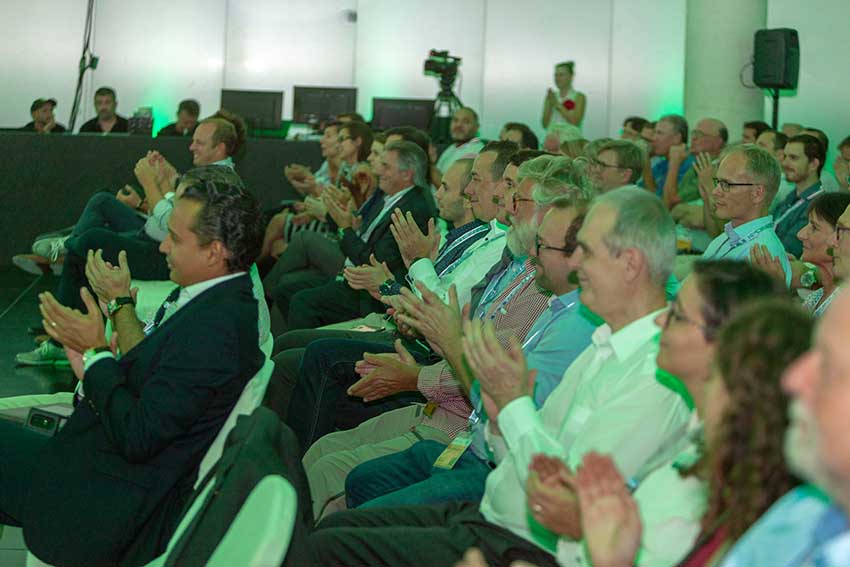Eurovent is the European Industry Association for Indoor Climate (HVAC), Process Cooling, and Food Cold Chain Technologies. Its members from throughout Europe represent more than 1.000 organizations, the majority small and medium-sized manufacturers. Based on objective and verifiable data, these account for a combined annual turnover of more than 30bn EUR, employing around 150.000 people within the association’s geographic area. This makes Eurovent one of the largest cross-regional industry committees of its kind.
Through Eurovent Market Intelligence (EMI), the European statistics office of the HVACR market, it has provided key market data since 1994 on which more than 300 manufacturers rely. The guiding principle of EMI is to establish a map of the European, Middle Eastern and African sales. Its EMEA-wide datasets are frequently used to support the development of legislation in the EU and beyond.
Easy Engineering: What’s the news for 2021 about new directions? (Meaning highlights for this year: products, events, growth, projects etc.)
EUROVENT: There are two major developments which are setting the tone for the European HVACR industry.
The first is the European Union’s benchmarking ambition to become the first climate-neutral continent by 2050 and its intermediary target of 55% greenhouse gas emissions reduction by 2030. To help deliver on these targets, the EU published the so-called Fit for 55 packages of policies in July, with more expected later this year. The implications for our industry are not easy to parse; unprecedented investment in building renovation, stronger price signals and framework incentives towards the electrification of heating, the continued phase-down of certain synthetic refrigerants, tightening requirements on the energy and resource efficiency of products, etc. These are sure to have quantitative and qualitative impacts on what HVACR products can and will be brought to market in the years to come. And this drive to sustainability is not limited to the EU. Most major economies have now made net-zero commitments of their own, including USA, the UK, China and Japan.
The other is the COVID-19 pandemic. Never before has the general public been more conscious of the importance of fresh air in indoor spaces. There has been strong demand for HVAC solutions that can improve Indoor Air Quality (IAQ) within existing system constraints. What the long-term impact will be on ventilation system design and market demand remains to be seen. While IAQ and energy efficiency may at first glance seem at odds which each other, our contention is that they can be reconciled. Many HVACR products are not only compatible with – but crucial to – net-zero building design and the provision of healthy indoor environments. And through continued innovation and manufacturing excellence, the most energy efficient ventilation equipment is marketed in the EU.

Eurovent itself is closely accompanying several revisions of European Regulations and Standards, including the Ecodesign framework including the Methodology for Ecodesign of Energy-related Products (MEErP), the Ecodesign and Energy Labelling Working Plan for 2020-2024, the Sustainable Products Initiative, and the Energy Performance of Buildings Directive (EPBD) including technical building system requirements applying to HVAC. Our Product Groups are working on development and promotion of many guidelines and industry recommendations.
Looking into the future, Eurovent will host its fourth bi-annual EUROVENTSUMMIT in Antalya, Turkey, in autumn 2022. After the events industry being dormant for nearly two years, the Summit will be an excellent opportunity for HVACR stakeholders to reconnect with their industry colleagues and friends. We cordially invite all readers of Easy Engineering to join us in Antalya next autumn.
Follow www.eurovent-summit.eu for most up to date information.
E.E: What can you tell us about market trends?
EUROVENT: It is not a surprise that the pandemic has had a certain impact on the HVACR market. In 2020, many products on the HVACR market showed a decreasing trend.
For instance, the chiller market was among such products. The market for units rated between 50-350kW recorded a decrease of 8% from the previous year, notably down by 22% in the UK, by 18% in Italy and by 19% in Finland. The decline for units with capacity above 700kW was more moderate, down only by 4%, driven especially by Germany (down by 29%), Italy (down by 26%) and the Netherlands (down by 18%). On the other hand, large increases in this segment were experienced in France (up by 36%), Austria (up by 37%) and Hungary (up by 37%).
Similarly, the European fan coil market decreased by 7%, falling to 1,29m units in 2020. Pandemic restrictions being the main cause, a noticeable drop was seen in almost all European countries. The EU-27+UK saw a decrease of 8,9%, mainly due to sharp falls in large markets such as France (down by 13,6%), Italy (down by 12%), Spain (down by 15,4%) and the UK (down by 21%). The losses were relatively weaker in certain countries where restrictions were less strict, such as Turkey (down by 6,8%) and Sweden (down by 7,3%). In contrast to the overall trend, some European markets experienced growth, such as Germany (up by 4%) and Romania (up by 9,2%).
The decrease on the rooftop market was quite visible. Volumes on the European rooftop market decreased by more than 13% in 2020, corresponding to about 11.200 units sold in Europe. Due to a smaller decline in sales (down by 4%), Spain became the largest market in Europe, with around 1.800 units sold in 2020, just ahead of France (down by 12%). These were followed by Italy and Turkey, with the latter having lost a great deal of momentum since 2019 (down by 13% in 2019 and down by 22% in 2020).
Different from others, The European air handling unit market did not experience a big drop. It fell to 2,2b EUR after a small decrease in 2020 (down by 2,8%). This change was primarily influenced by Germany, the largest European market, which was relatively stagnant (down by 2,4%) at 413m EUR. Similarly, Northern Europe, the second-largest market, was also very stable in 2020 (387m EUR, down by 2,2%). The third-largest market, Eastern Europe, experienced a slightly larger drop (307m EUR, down by 4,8%) which is in line with the overall change in the EU-27+UK (down 4,5%).

Interestingly, not all product types have shown a decreasing trend on the market last year. With the question of IAQ gaining more importance during the pandemic, the sales of air filters have increased. The European market for air filters grew by over 4% in 2020, with total sales of around 1.050m EUR. This growth was mainly driven by the two largest countries, Germany and France, which together account for one-third of the market and experienced a growth of around 6%. The demand for market data from EMI regarding air filters has also visibly increased compared to previous years. 8 more manufacturers have decided to participate in the air filters statistics collections of EMI to get reliable market data, rising the number of participants in the collection to 24.
Similarly, the IT cooling market has also expanded in the face of the pandemic. It grew to 716m EUR in the EMEA region in 2020, of which 43% consisted of room air conditioners (also called CRAC: computer room air conditioners), 15% row and rack coolers, 7% telecommunications cooling units (portable TLCs) and 37% air handling units and other evaporative cooling units. Already on a rising trend before the pandemic with the fast digitalization of the world and new 5G technologies, IT cooling has gained even more importance on the market with more companies adopting home office which boosted the need for more cloud services. Consequently, the data centers are also on the rise which was an absolute driver for the HVACR industry in 2020. All the products that are actively used in data centres enjoyed the increase or at least the stability in incoming orders even during the crisis.
E.E: What estimations do you have for 2021?
EUROVENT: The HVACR market seems to be rebounding in 2021 after a difficult year with the pandemic. With the restrictions lifted, the deliveries of the suspended orders are picking up where they left off. This is boosting the rebound speed along with the procrastinated new orders.
EMI expects that there will be an increasing trend in 2021 compared to 2020 in the HVACR industry with the efforts for recovering from the impact of the pandemic. This means that the market will approach its 2019 level, however, it is hard to say if there will be a growth in 2021 compared to 2019 as the uncertainty regarding COVID-19 still lingers.
From the qualitative side, there are many subjects that will play an important role on the product choice in the next few years, such as IAQ, low energy consumption, decarbonization, green recovery, 5G technologies, etc.
Readers interested in product and country forecasts or in qualitative HVACR market data can purchase the upcoming EMI HVACR market qualitative synthesis report in September 2021 for 6.000 EUR (excl. VAT). HVACR manufacturers are invited to participate in the EMI qualitative survey and purchase the report for a discounted price of 2.500 EUR (excl. VAT). EMI data collections participants can receive the complete report for free by participating in the study. To participate in the study and to get more information about the report, please contact EMI via statistics@eurovent-marketintelligence.eu.

